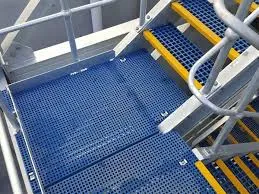
-
 Afrikaans
Afrikaans -
 Albanian
Albanian -
 Amharic
Amharic -
 Arabic
Arabic -
 Armenian
Armenian -
 Azerbaijani
Azerbaijani -
 Basque
Basque -
 Belarusian
Belarusian -
 Bengali
Bengali -
 Bosnian
Bosnian -
 Bulgarian
Bulgarian -
 Catalan
Catalan -
 Cebuano
Cebuano -
 China
China -
 China (Taiwan)
China (Taiwan) -
 Corsican
Corsican -
 Croatian
Croatian -
 Czech
Czech -
 Danish
Danish -
 Dutch
Dutch -
 English
English -
 Esperanto
Esperanto -
 Estonian
Estonian -
 Finnish
Finnish -
 French
French -
 Frisian
Frisian -
 Galician
Galician -
 Georgian
Georgian -
 German
German -
 Greek
Greek -
 Gujarati
Gujarati -
 Haitian Creole
Haitian Creole -
 hausa
hausa -
 hawaiian
hawaiian -
 Hebrew
Hebrew -
 Hindi
Hindi -
 Miao
Miao -
 Hungarian
Hungarian -
 Icelandic
Icelandic -
 igbo
igbo -
 Indonesian
Indonesian -
 irish
irish -
 Italian
Italian -
 Japanese
Japanese -
 Javanese
Javanese -
 Kannada
Kannada -
 kazakh
kazakh -
 Khmer
Khmer -
 Rwandese
Rwandese -
 Korean
Korean -
 Kurdish
Kurdish -
 Kyrgyz
Kyrgyz -
 Lao
Lao -
 Latin
Latin -
 Latvian
Latvian -
 Lithuanian
Lithuanian -
 Luxembourgish
Luxembourgish -
 Macedonian
Macedonian -
 Malgashi
Malgashi -
 Malay
Malay -
 Malayalam
Malayalam -
 Maltese
Maltese -
 Maori
Maori -
 Marathi
Marathi -
 Mongolian
Mongolian -
 Myanmar
Myanmar -
 Nepali
Nepali -
 Norwegian
Norwegian -
 Norwegian
Norwegian -
 Occitan
Occitan -
 Pashto
Pashto -
 Persian
Persian -
 Polish
Polish -
 Portuguese
Portuguese -
 Punjabi
Punjabi -
 Romanian
Romanian -
 Russian
Russian -
 Samoan
Samoan -
 Scottish Gaelic
Scottish Gaelic -
 Serbian
Serbian -
 Sesotho
Sesotho -
 Shona
Shona -
 Sindhi
Sindhi -
 Sinhala
Sinhala -
 Slovak
Slovak -
 Slovenian
Slovenian -
 Somali
Somali -
 Spanish
Spanish -
 Sundanese
Sundanese -
 Swahili
Swahili -
 Swedish
Swedish -
 Tagalog
Tagalog -
 Tajik
Tajik -
 Tamil
Tamil -
 Tatar
Tatar -
 Telugu
Telugu -
 Thai
Thai -
 Turkish
Turkish -
 Turkmen
Turkmen -
 Ukrainian
Ukrainian -
 Urdu
Urdu -
 Uighur
Uighur -
 Uzbek
Uzbek -
 Vietnamese
Vietnamese -
 Welsh
Welsh -
 Bantu
Bantu -
 Yiddish
Yiddish -
 Yoruba
Yoruba -
 Zulu
Zulu
frp launder
The Importance of FRP Launders in Industrial Applications
In recent years, Fiber Reinforced Polymer (FRP) materials have gained significant traction in various industrial applications, particularly in wastewater treatment and mineral processing. One of the most innovative applications of FRP materials is in the construction of launders. FRP launders are specially designed channels or troughs used to transport liquids, particularly in processes that involve separation or filtration. This article will explore the advantages of FRP launders, their applications, and their significance in enhancing process efficiency and sustainability.
Advantages of FRP Launders
1. Corrosion Resistance One of the primary benefits of FRP launders is their resistance to corrosion. Traditional materials such as steel and concrete are often susceptible to chemical attacks, especially in harsh environments such as wastewater treatment facilities. FRP is inert to many chemicals, making it an ideal choice for applications that involve corrosive substances.
2. Lightweight FRP materials are significantly lighter than their traditional counterparts. This lightweight nature not only simplifies the installation process but also reduces transportation costs. Moreover, the reduced weight puts less strain on supporting structures, allowing for more flexibility in design and implementation.
3. Durability and Longevity The lifespan of FRP materials is commendable. They can withstand extreme environmental conditions without deteriorating, leading to lower maintenance costs and less frequent replacements. This durability is particularly advantageous in settings that require long-term operational efficiency.
4. Customizability FRP launders can be tailored to suit specific needs. They can be molded into various shapes and sizes, fitting perfectly into diverse operational setups. This customization enables engineers and designers to optimize their facilities for better performance.
Applications of FRP Launders
frp launder

FRP launders are widely utilized across various sectors. In wastewater treatment, they play a critical role in transporting sludges and effluents during primary, secondary, and tertiary treatments. Their corrosion-resistant properties ensure that they remain functional in environments where traditional materials might fail, thus maintaining the efficiency of the treatment process.
In mineral processing, FRP launders are employed to manage the flow of slurries, allowing for the efficient extraction of valuable minerals. They facilitate the movement of materials throughout the plant, helping to streamline operations and improve productivity.
Moreover, in the food and beverage industry, FRP launders are increasingly popular due to their hygienic properties and ease of cleaning. They help maintain the high standards required for food safety and compliance with health regulations.
Sustainability and Environmental Impact
The use of FRP launders aligns with sustainability goals in industrial sectors. Their longevity reduces the need for frequent replacements, thereby decreasing waste. Additionally, their lightweight nature contributes to lower energy consumption during transport and installation, which is increasingly important as industries aim to minimize their carbon footprints.
Furthermore, FRP's resistance to chemical leaching ensures that the materials used in construction do not negatively impact the surrounding environment, especially in sensitive sites like wastewater treatment plants.
Conclusion
In conclusion, FRP launders represent a significant advancement in materials technology within the industrial sector. Their advantages in corrosion resistance, weight, durability, and customizability provide compelling reasons for their adoption in various applications, from wastewater treatment to mineral processing and beyond. As industries continue to prioritize efficiency and sustainability, FRP launders will likely become increasingly integral to optimizing processes and protecting the environment. By investing in such innovative solutions, businesses can not only improve their operational efficiency but also contribute positively to global sustainability efforts.
Latest news
-
Exploring the Benefits of Top Hammer Drifter Rods for Enhanced Drilling PerformanceNewsJun.10,2025
-
High-Precision Fiberglass Winding Machine for GRP/FRP Pipe Production – Reliable & Efficient SolutionsNewsJun.10,2025
-
FRP Pipes & Fittings for Shipbuilding - Corrosion-Resistant & LightweightNewsJun.09,2025
-
Premium FRP Flooring Solutions Durable & Slip-ResistantNewsJun.09,2025
-
Premium Fiberglass Rectangular Tanks Durable & Lightweight SolutionNewsJun.09,2025
-
Tapered Drill String Design Guide Durable Performance & UsesNewsJun.09,2025









